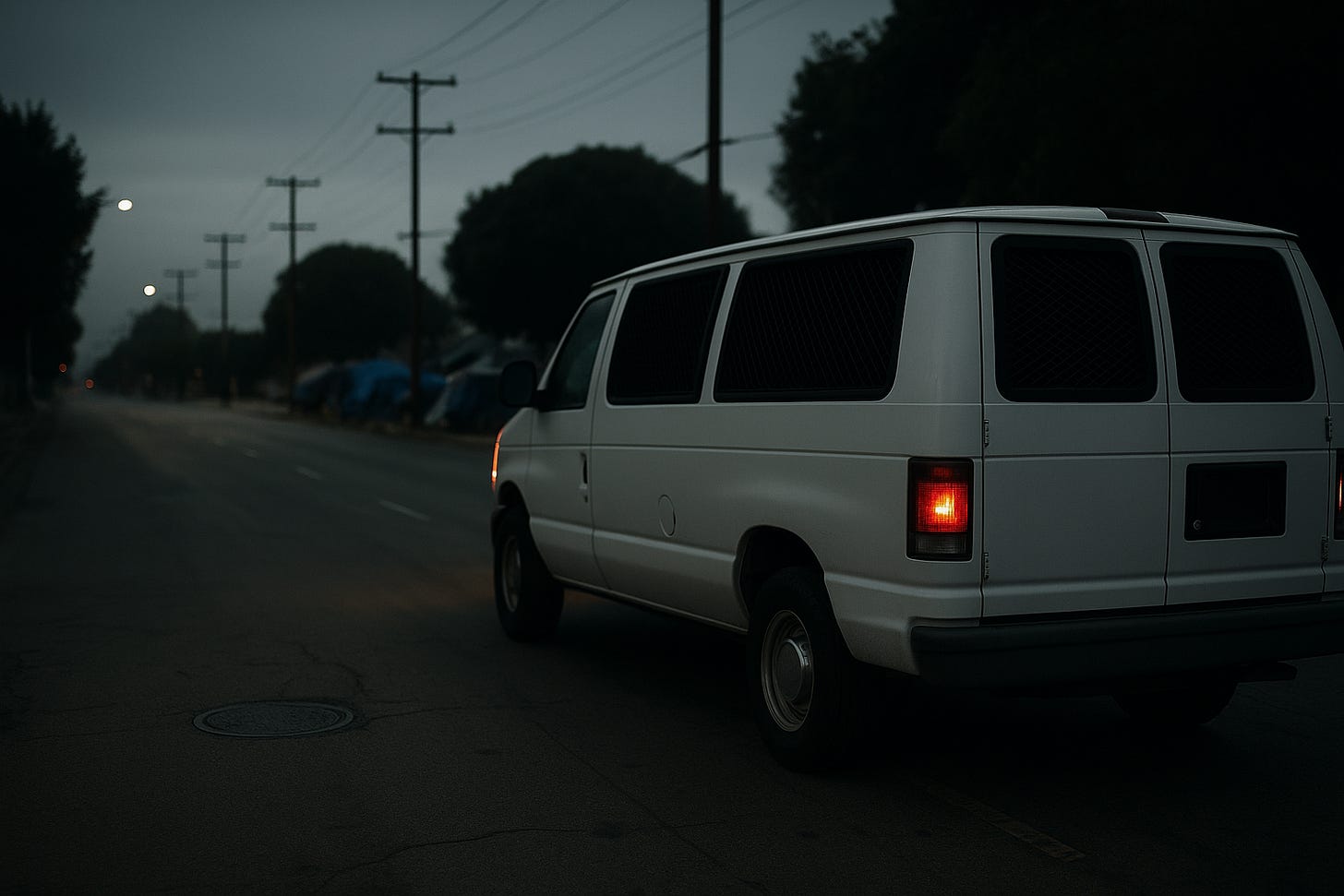I. The Two Faces of the Machine
Every system of control learns to speak in two languages: reassurance and pursuit.
On the surface, the new era of immigration technology offers self-service portals and humane interfaces. Beneath, it maintains the older grammar of command—uniforms, transport vans, and midnight arrests.
These are not contradictions. They are harmonies.
The interface convinces the fearful to stand still; the enforcement arm moves in only when stillness is achieved. Each reinforces the other. One manages perception, the other enacts consequence.
II. The Back-End Engine
Behind the voluntary façade lies a dense web of data exchange: public records, court filings, biometric databases, and commercial analytics.
Modern enforcement does not begin with a knock on the door; it begins with a data query. Case-management platforms integrate thousands of disparate records—addresses, phone numbers, vehicle registrations, employment histories—and return a list of “enforcement opportunities.”
Field teams are deployed not through intuition but through probability.
The search for bodies begins as an act of pattern recognition.
Those who interact with official portals, register their information, or attempt to follow lawful procedures often become the easiest to find. In a digital system, compliance generates visibility, and visibility generates vulnerability. It is a paradox of modern governance: the more lawfully one behaves, the easier one is to locate.
III. The Human Layer
The algorithms may identify, but the hunt still requires people.
Agents, contractors, drivers, translators, detention officers—the living infrastructure of enforcement—form a parallel economy that depends on throughput. Activity metrics justify budgets, and budgets sustain jobs.
Every televised raid and every van departure becomes a small performance of deterrence. Visibility is policy: it reminds the unseen population that the network can materialize anywhere, at any time.
IV. The State Within the State
The digital management of migration now extends far beyond government payrolls.
Private data brokers and technology vendors maintain the connective tissue that links databases, analyzes patterns, and visualizes results. They operate through contracts rather than legislation, and their algorithms are proprietary—shielded from the transparency requirements that govern public agencies.
This is the new administrative paradox: the sovereign power to remove resides partly in code that elected officials cannot audit. Sovereignty has become leased software.
V. The Siege of the States
Blue-state leaders speak of sanctuary, but the underlying architecture is federal.
Immigration enforcement is a national prerogative; states that resist face pre-emption, funding threats, and legal challenges. Data pipelines linking local law enforcement to federal systems remain active even when governors declare independence from them. The result is a jurisdictional mirage: moral opposition aboveground, federal operation below.
The siege, therefore, is legal before it is physical. No barricade of rhetoric can block an administrative warrant executed through a national database.
VI. The Moral Physics of Disappearance
The hunt does not depend on cruelty alone; it depends on efficiency.
Those who are easiest to track are those who tried hardest to comply.
Each update to a file, each renewed permit, each address change becomes a breadcrumb leading back to the individual. The architecture rewards order with exposure and punishes invisibility with suspicion.
The outcome is a self-sorting society where fear, not law, determines movement.
VII. The Silent Geography
Across the country, there are recurring points of contact: transit stations before dawn, courthouse steps, hospital parking lots, shelter entrances. These are not chosen randomly. They correspond to predictive models built on time, pattern, and probability.
A van idling at the edge of an encampment is the physical expression of an unseen equation that began days earlier in a data center.
The geometry of the hunt is invisible until the moment of collision.
VIII. The Economy of Fear
Enforcement generates its own market.
Every detention bed, transport route, and processing hour converts human anxiety into revenue streams. In this sense, fear is not only an instrument of control—it is a resource to be extracted. The system must continue to move to justify its own existence.
IX. The Act of Naming
To describe this architecture is not to romanticize it but to expose its logic.
Its greatest strength lies in abstraction: the dispersal of responsibility across code, contract, and chain of command. By mapping its components, one redraws its silhouette against the political sky. Visibility becomes a form of accountability.
Vanishing Point...
When the algorithm finishes its search, it leaves no footprint—only absence where once there was a name.
The architecture of the hunt is not designed to catch everyone. It is designed to teach everyone to remain still.
Its true achievement is behavioral: the quiet conditioning of a population to expect disappearance as an acceptable outcome of order.
And yet, by recognizing its form, we begin to loosen its grip.
Every act of understanding reclaims a fragment of autonomy from the machine that would prefer we move only when commanded.
Thank you for reading,
Robert J. Rei, October 16, 2025





Congratulations!
This is one of the best, if not the finest, articles you have written, Robert.
This thesis needs to be expanded to show details and graphics about how it works and who is operating the various elements of the system. Videos would be helpful.
Great Job man